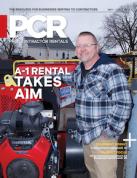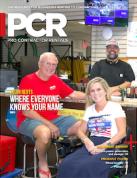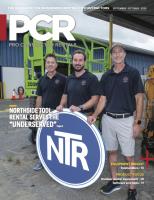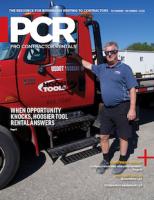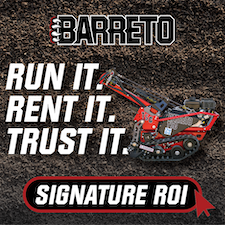Service Tips: Is it time to re-tire?
Tips on tire maintenance and replacement.
Rental centers are keenly aware that tires are a key part of keeping a rental operation rolling. Although ready-to-rent checklists almost always include tire inspection as part of the process, those completing the inspections may not be aware of some tire facts that could affect tire life and performance.
Experts at Cooper Tires shared some helpful reminders about tire maintenance and replacement that apply to on-road and off-road vehicles:
All-season tires are not winter tires
All-season tires are a great choice for the majority of customers, as they are designed specifically to perform well in year-round moderate weather. If you live in an area with severe winter weather conditions, it is highly recommended that you install winter tires during the winter months, typically from November through March.
Winter tires are specifically designed and formulated to improve braking and handling on snow and ice. It is highly recommended that winter tires be placed in all four positions for optimal winter performance. However, if you choose to only install two winter tires, they must be placed on the rear axle positions.
Valve stem maintains tire pressure
Those little caps on the valve stem of tires are designed to keep moisture and dirt out, as well as to provide an additional seal to the valve core that holds compressed air in the tires. Always make sure valve caps are on every tire! Also, when you have a tire replaced, have a new valve stem assembly installed at the same time.
Correct tire pressure is not found on its sidewall. The pressure indicated on a tire sidewall is its maximum pressure tire. The proper inflation pressure is be what is clearly stated in your vehicle’s owner’s manual and/or on the vehicle placard found on the driver’s side doorjamb, glove box or fuel door.
Eyeballing tires for proper pressure is impossible. Even though your tires may look properly inflated, they may be under inflated by as much as 50 percent.
It is important to maintain proper tire inflation pressure. Under-inflated tires can lead to tire failure, irregular tread wear and increased vehicle fuel consumption.
Proper tire pressure can save money at the pump. Tires that are under inflated by 8 psi or more can reduce the life of the tire by 9,000 miles and can increase the vehicle’s fuel consumption by four percent. Be sure to routinely check tire pressure to reduce fuel consumption and overall expenses on the road.
Outside temperature can affect tire pressure. Ambient/outside temperature affects tire pressure more than you might expect. On average, experts say that tire pressure decreases by about one psi for every 10 F drop in the temperature. The changing seasons are a good reminder to check inflation pressure.
Check tread with a penny
Proper tread depth helps tires maintain traction and improves handling. Proper tread depth can also help prevent hydroplaning. Additionally, bald tires are more likely to be damaged by potholes and other road hazards.
The tread on your tires should be more than 2/32 of an inch deep and can be checked by inserting a U.S. penny into the tread, with Lincoln’s head facing down. If the top of Lincoln’s head is covered by tread, there is at least a minimum acceptable amount of tread. If the top of his head is visible, it is time to replace the tire. If only replacing two tires, install them on the back axle.
Cooper Tires recommends that all four tires be replaced at the same time. However, if you can only purchase two new tires at a time, the new pair should always be installed on the rear axle for both front and rear wheel-drive vehicles.
By placing the new tires on the rear axle, the deeper tire tread will help drivers maintain control on wet roads, which can help to prevent the vehicle from a potentially hazardous over-steer handling condition. Many consumers assume that new tires should go on the front, especially if they have a front-wheel drive vehicle; this is not correct.
Monthly and more checks
It’s simple to check tires and should be completed at least once a month and before every long trip. As the only part of the vehicle connecting to the road, it’s important they are in good shape for passenger safety and the safety of other people and equipment. A good tire once-over takes about 10 minutes and should cover these points:
1. Check tire pressure. Check air pressure when tires are cool (minimum three hours after driving). Find the manufacturer’s recommended air pressure located on the vehicle doorjamb, glove box, fuel door or the owner’s manual. Check the pressure, add or release pressure to get it to the recommended pressure and replace the valve cap.
2. Check the tread. As noted above, use a Lincoln penny to check tread depth. If the top of his head is visible at any point around the tire, it is time to replace the tire.
3. Check overall tire condition. Visually check for cuts, cracks, splits, punctures, irregular wear and bulges. If any of these conditions are spotted, or if you are doubtful about the condition of your tires, ask a tire professional.
Many tires contain wear bars in the grooves of the tire tread which show up when only 2/32nds of an inch (1.6 mm) of the tread remains. Tires worn beyond this stage are dangerous and should be replaced immediately.
This article was originally published in the May-June 2020 issue of Pro Contractor Rentals magazine. ©2020 Urbain Communications LLC. All rights reserved.



